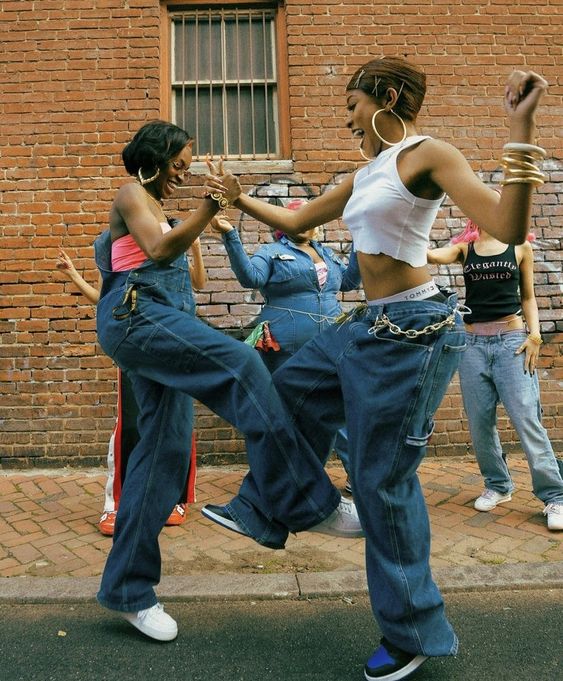The 1990s, often celebrated as the golden era of Hip Hop music, also established lasting precedents in fashion that continue to shape our style today. The impact of 90s Hip Hop fashion is still evident, which is why we’re exploring the most iconic trends and brands from that era to inspire your outfit choices.
Our admiration for the 90s era has expressed itself in various ways, from fashion brands incorporating its aesthetic into their collections to musicians featuring these styles in their music videos. Moreover, today’s youth are reviving many of the iconic trends from that time. Let’s dive deeper into how these influences are reshaping contemporary fashion and culture.
Bandana Clothing
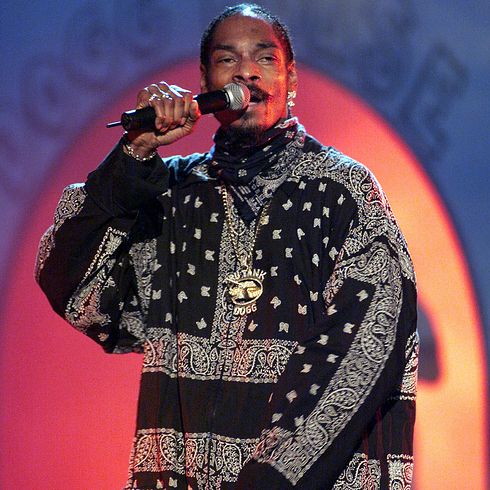
The bandana stands out as another geographical fashion item, closely associated with West Coast rappers and gang culture. In the 90s, it became a symbol of identity and affiliation, particularly among artists hailing from Los Angeles.
Rappers often wore bandanas to represent their respective neighborhoods, with the vibrant colors signifying different gang affiliations—red for the Bloods and blue for the Crips. This visual representation of loyalty and belonging naturally transitioned into the music of the era, influencing the overall aesthetic of West Coast Hip Hop.
As artists incorporated the bandana into their fashion choices, it became not only a cultural marker but also a prominent accessory in music videos and performances, further solidifying its place in Hip Hop fashion history. The bandana’s enduring presence in contemporary styles reflects its deep-rooted connection to the culture and its evolution over time.
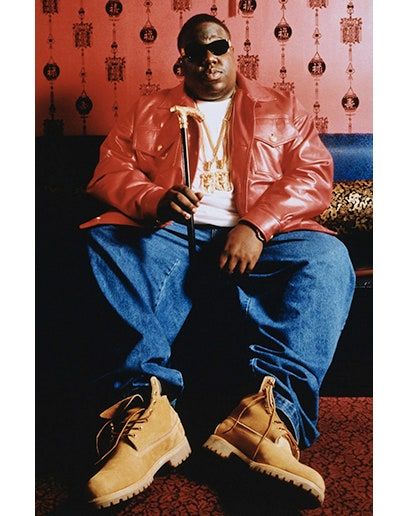
At the forefront of 90s Hip Hop fashion is the iconic suede boot, a style steeped in heritage and deeply connected to the culture.
The boot’s origins date back to the 90s, with nearly every prominent East Coast rap artist, from Jay-Z to Biggie Smalls and Mobb Deep, donning this footwear. Originally designed for construction workers, the boot gained traction among New York drug dealers, who favored it for its durability in harsh weather conditions. As many drug dealers and hip hop artists hailed from the same neighborhoods, upcoming rappers were naturally influenced by this rugged aesthetic, solidifying the suede boot’s place in hip hop culture.
American Sportswear Brands
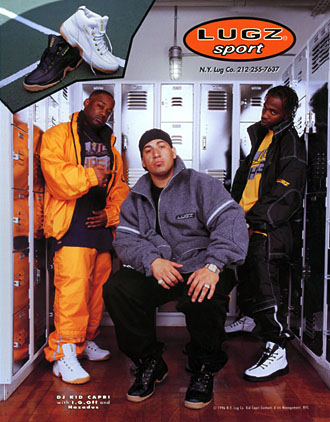
In the 90s, Hip Hop quickly forged a connection with American sportswear brands like Tommy Hilfiger and Polo Ralph Lauren, as artists sought more sophisticated silhouettes beyond traditional designer labels.
A pivotal moment occurred in 1994 when Snoop Dogg performed on Saturday Night Live wearing a Tommy Hilfiger polo shirt that had been gifted to him just hours before the show. This appearance not only showcased the seamless blend of Hip Hop and sportswear but also encouraged many Hip Hop and R&B artists to infuse their personal styles with these brands.
Aaliyah exemplified this trend perfectly; she appeared in numerous campaigns for Tommy Hilfiger while embodying 90s Hip Hop fashion through her signature looks of baggy jeans and crop tops. Her style captured the essence of the era, blending comfort with a chic aesthetic that continues to inspire today.
Puffy Jacket
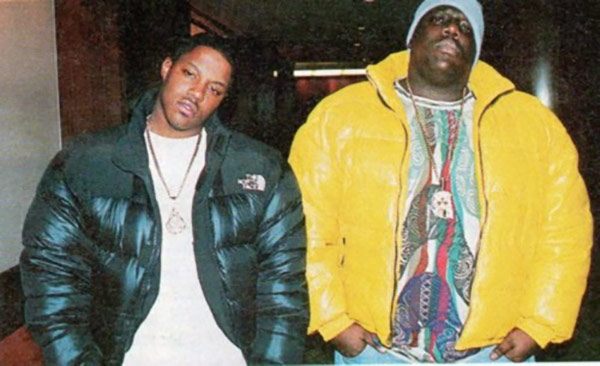
While the plaid jacket is emblematic of West Coast Hip Hop fashion, the puffy jacket holds a similar significance for East Coast Hip Hop.
The puffy coat, much like the Timberland boot, was adopted by East Coast MCs as a practical response to the harsh winter weather. Its oversized, insulated design became a staple among Hip Hop artists and Black youth in the neighborhoods, representing both functionality and style.
Typically paired with New York Yankees caps, hoodies, and boots, the puffy jacket became a key element of the East Coast aesthetic, capturing the grit and resilience of urban life. This distinctive look has even inspired a host of memes over the years, highlighting the unique blend of practicality and cultural expression that characterizes New York’s Hip Hop fashion scene.
Snap Back Caps
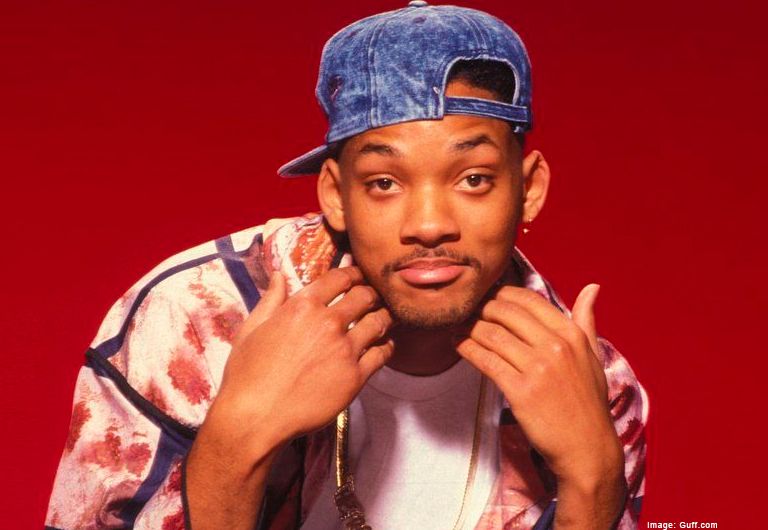
The snapback cap is an iconic symbol of 90s Hip Hop fashion, and its association is well-founded. Take The Fresh Prince of Bel-Air, for instance; the show featured a young Will Smith who frequently donned snapback hats throughout multiple episodes, showcasing the trend’s prevalence during that time.
While the early 2000s saw the 59FIFTY fitted cap rise to prominence as the preferred choice, the snapback experienced a revival over the past decade, notably fueled by tracks like Tyga’s “Snapbacks Back.” This resurgence serves as a clear indication that the influence of the 90s remains strong, with many still rocking snapbacks today. The enduring popularity of this style underscores its lasting impact on hip hop culture and fashion.
Pelle Pelle
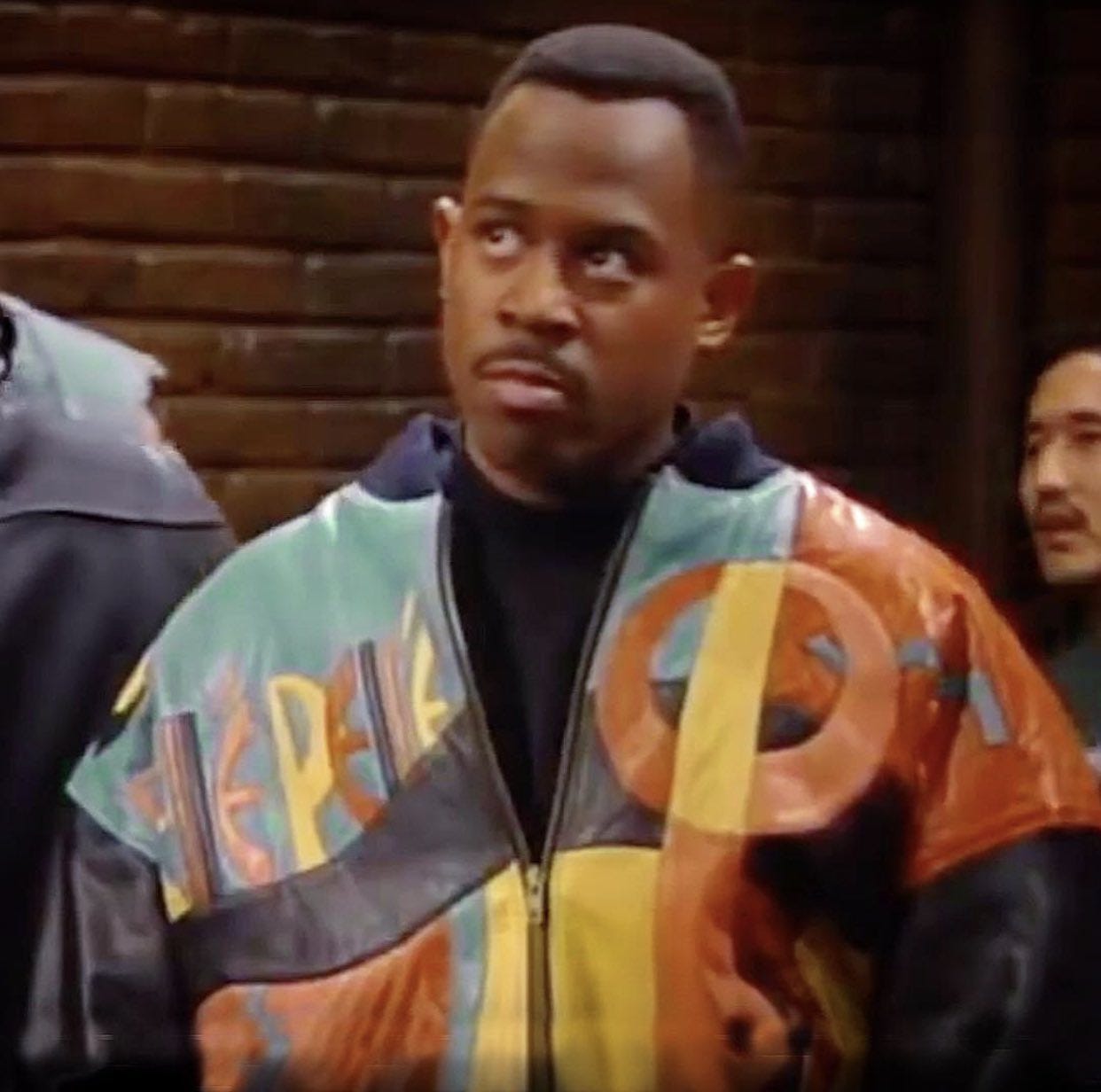
Pelle Pelle skyrocketed to popularity in the 90s for two key reasons. First, the leather outerwear company became a favorite among East Coast rappers who embraced its bold and stylish pieces as a key part of their wardrobe.
Second, Pelle Pelle was one of the first brands to introduce the designer baggy pants look, which resonated with the urban market. Recognizing a demand for leather jackets tailored to the streetwear aesthetic, they seized the opportunity to create fashionable outerwear that would redefine urban style.
In the 90s, it was nearly impossible to watch a music video from East Coast artists like Keith Murray, Guru, and Nas without spotting one of their signature leather jackets. Pelle Pelle’s influence during this era helped to solidify its status as a cornerstone of Hip Hop fashion, leaving a lasting impact on the culture.
Graffiti Clothing
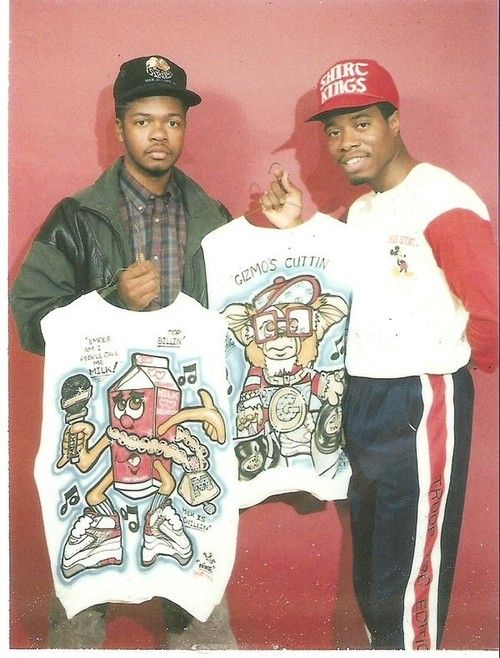
In the early days of Hip Hop, graffiti emerged as a powerful form of self-expression for individuals in New York’s low-income neighborhoods. As one of the four main elements of Hip Hop culture, graffiti found its way from the streets, subways, and trains into the realm of fashion.
The vibrant colors, striking graphics, and bold patterns characteristic of graffiti solidified its significance in Hip Hop culture. Pioneering brands like Shirt Kings utilized their graffiti artistry to create airbrushed designs on apparel worn by icons such as LL Cool J, Big Daddy Kane, and Mike Tyson. This fusion of art and fashion not only showcased the creativity of the culture but also helped to popularize graffiti as an essential element of Hip Hop style.
Bucket Hat/Kangol Caps
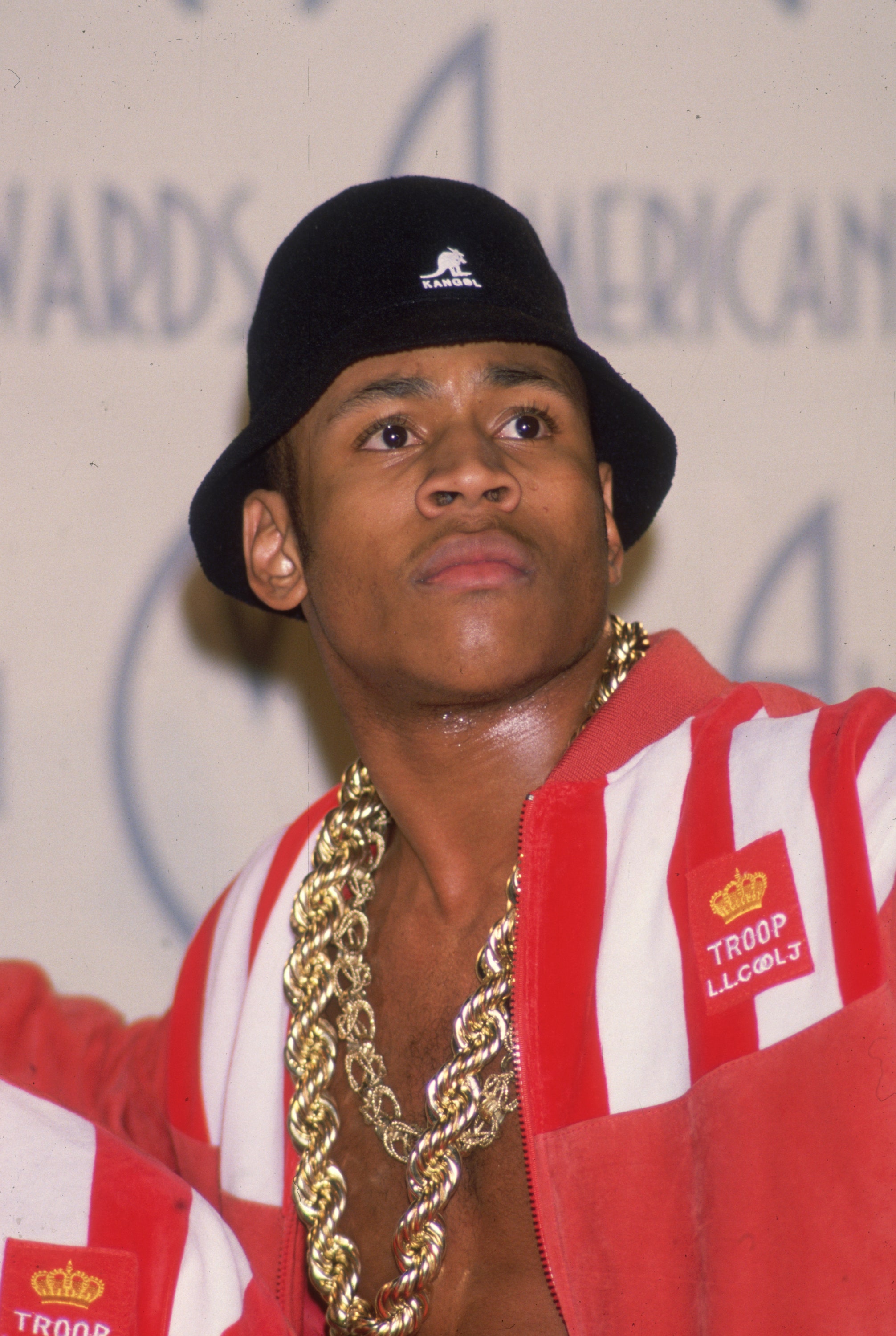
Kangol caps owe much of their popularity to LL Cool J, who sported them in numerous music videos during the 80s and 90s. This iconic headwear also received notable product placement in the film New Jack City, where Wesley Snipes and his crew showcased the hat throughout the movie.
In addition to Kangol caps, hip hop fans looking for more affordable options often turned to regular branded bucket hats in the 90s, influenced by the Kangol style. While Kangol caps may not be as prevalent today, the bucket hat has remained a contemporary favorite, with its roots tracing back to the vibrant fashion of the 80s and 90s. This enduring accessory reflects the lasting impact of that era on modern fashion trends.
Bomber Jacket
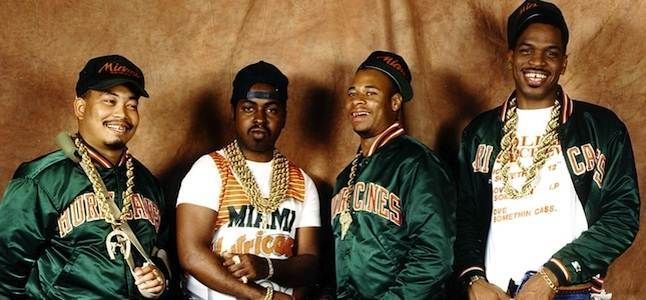
Certain fashion pieces are deeply connected to specific subcultural movements, with each garment symbolizing the identity and values of its respective community. For example, denim jackets are synonymous with punk, parkas with the grunge movement, work shirts with skateboarding culture, and bomber jackets with Hip Hop.
The bomber jacket, in particular, gained massive popularity within the Hip Hop scene as the culture began to intertwine with sports, as previously discussed in the jersey section. The 80s baseball bomber style became a staple in the 90s, largely influenced by iconic acts like RUN DMC.
These jackets were not just functional; they represented a fusion of style and identity, showcasing the artists’ connection to sports culture while simultaneously making a bold fashion statement. The bomber jacket’s versatility and strong cultural ties have allowed it to remain a significant piece in both Hip Hop fashion and broader streetwear trends today.
Double Denim
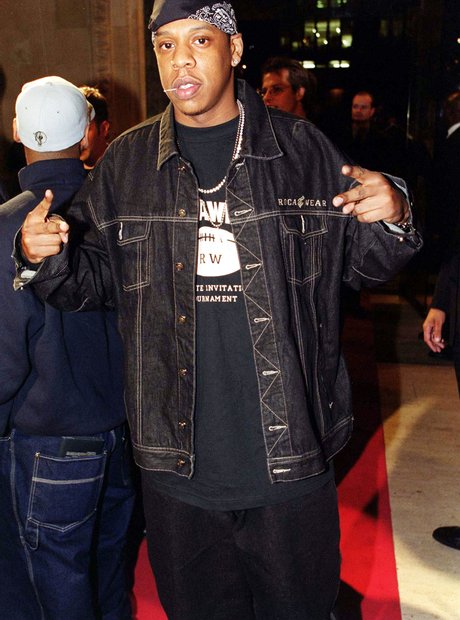
In the 90s, urban brands like Karl Kani, Rocawear, Ecko Unltd, and Johnny Blaze recognized the evolution of denim from workwear to a fashionable staple. They embraced this shift by introducing baggy and oversized denim pants and jackets that resonated with the Hip Hop aesthetic.
While subcultures such as punk rock had incorporated denim into their styles in the 80s, Hip Hop began to adopt and adapt denim around the same time RUN DMC brought streetwear into the mainstream. This trend allowed young people in urban areas to express themselves through fashion.
Often styled with Timberland or Lug boots, the denim look of the 90s emerged as an accessible and affordable fashion choice for Black youth in inner cities. It not only reflected the culture’s creativity but also helped to solidify denim as a key element of Hip Hop fashion, making a lasting impact that continues to influence streetwear today.
Oversized Clothing
A significant aspect of 90s Hip Hop fashion was the embrace of oversized clothing, with artists often donning pieces that were two sizes too big—a trend that has made a notable comeback today.
This culturally rooted style, commonly referred to as urban fashion, gave rise to iconic brands like Fubu, Phat Farm, and Wu Wear, all catering to a demographic that shared a love for this aesthetic. While contemporary Hip Hop artists frequently sport designer and luxury brands, the 90s celebrated a bolder, more confident expression, encapsulated through the oversized silhouettes that defined the era. This trend not only represented a unique fashion statement but also a cultural identity that resonated deeply within the Hip Hop community.
Plaid Jacket and Shirts

Flannel shirts and plaid jackets became staple pieces for West Coast Hip Hop artists, gaining popularity through figures like Snoop Dogg and films such as Menace II Society and Juice. This distinctive style not only defined the aesthetic of the West Coast Hip Hop scene but also resonated with broader cultural trends, reflecting the laid-back yet bold attitude of the era.
Today, flannel and plaid remain prominent in fashion, transcending their original context while still carrying echoes of their 90s roots. The continued relevance of these styles underscores their influence and enduring appeal within Hip Hop culture and beyond.
Adidas Superstars

RUN DMC pioneered the first partnership between a sportswear company and a music group, establishing themselves as cultural icons in the realm of streetwear and Hip Hop fashion.
In the early days of Hip Hop, artists like Melle Mel and Afrika Bambaataa drew inspiration from African King attire and Glam Rock styles. However, RUN DMC introduced a more street-authentic aesthetic that significantly transformed Hip Hop fashion. Their unique style would go on to influence millions around the globe, shaping the trajectory of fashion within the genre for years to come.
With the success of their hit song “My Adidas,” RUN DMC became representatives of black urban youth across America, embodying a style that seamlessly transitioned into the 90s. This era of Hip Hop fashion featured signature looks that included tracksuits from head to toe, bucket hats, and rope chains.
The partnership with Adidas not only laid the groundwork for how artists dressed throughout the 90s but also opened the door for more collaborations with other artists, such as Kanye West with Yeezy sneakers, Snoop Dogg, Ciara, and Pharrell. This lasting influence demonstrates how RUN DMC’s legacy in fashion continues to resonate within the industry today.
MLB and NBA jerseys
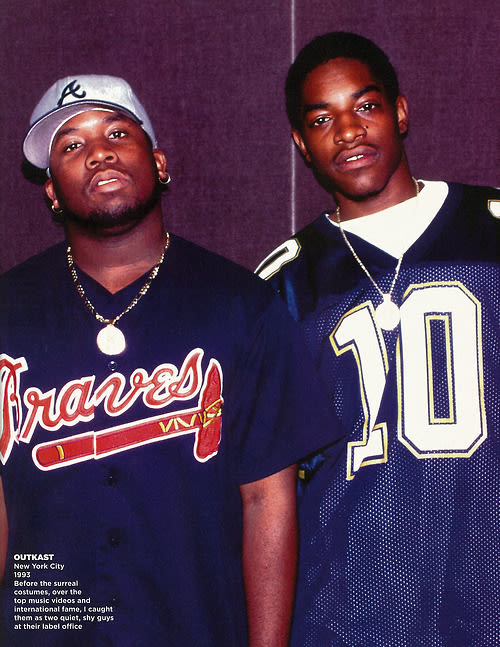
Sports jerseys have long been a staple in Hip Hop culture, frequently appearing in music videos where artists proudly represent their home teams. Over the years, the relationship between sports, athletes, and hip hop has become increasingly intertwined, as seen in iconic rap videos like Jay-Z and Jermaine Dupri’s “Money Ain’t a Thang” and Will Smith’s “Summertime.”
Both of these tracks, released in the 90s, highlight how artists wore their jerseys as bold fashion statements. The jerseys not only served as a way to show team pride but also became emblematic of the artists’ personal style and cultural identity, further solidifying the connection between hip hop and the world of sports.
Military Clothing
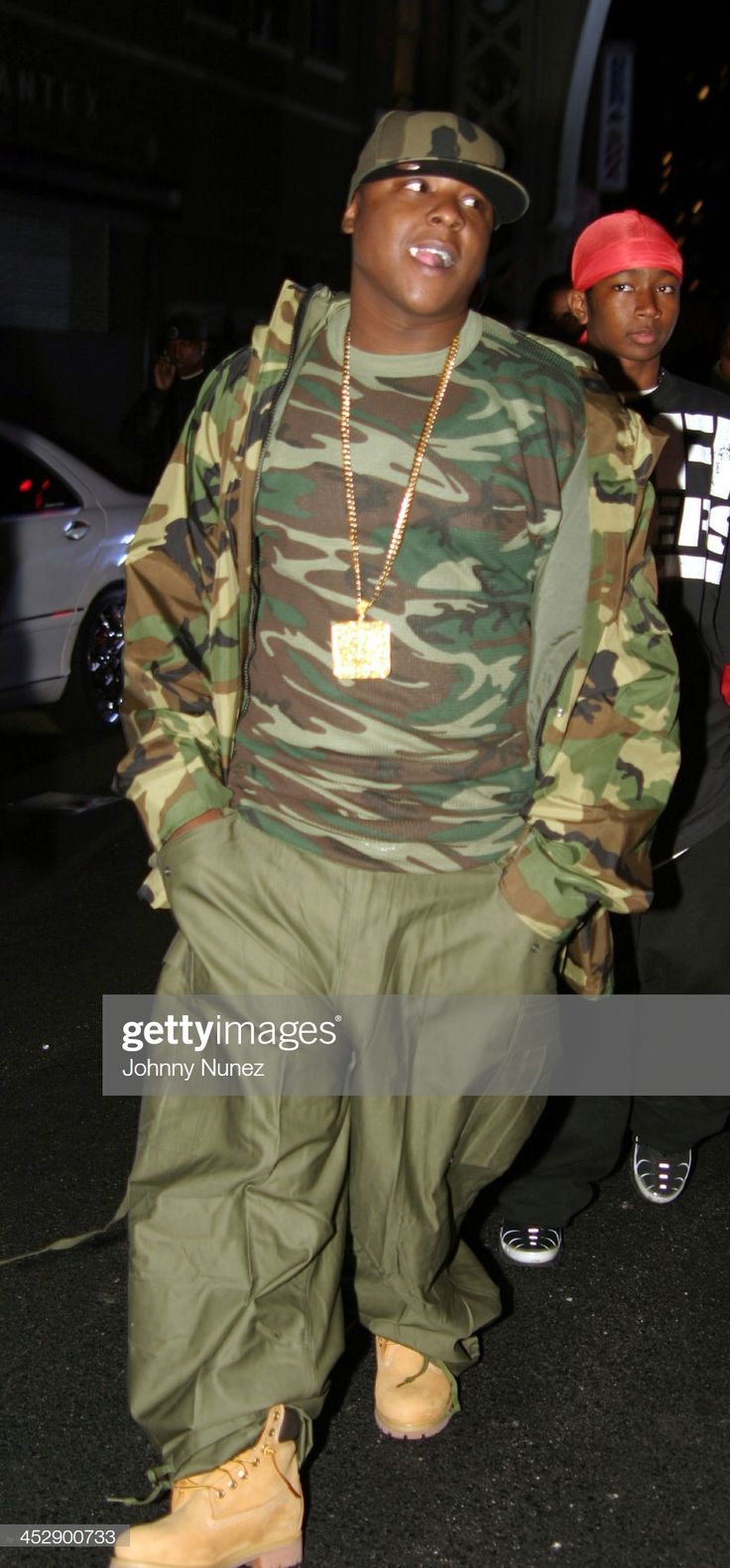
As Hip Hop emerged as a powerful voice in America, artists and groups like Tupac Shakur, Public Enemy, and Nas used their platforms to address pressing political issues affecting Black Americans.
Whether consciously or not, military gear served as a uniform that reinforced the messages conveyed in their lyrics, symbolizing the struggle against systemic oppression faced by Black communities. While military clothing became a fashion statement in the 90s, it also became the preferred attire for artists aiming to deliver a strong message while maintaining a visually impactful presence. This trend resonated with influential figures like Biggie and Das EFX, who adopted similar styles.
Beyond its political implications, camouflage also gained popularity as a major trend in the 90s, continuing to influence fashion today. The fusion of military aesthetics with Hip Hop culture not only highlighted the genre’s social consciousness but also solidified military wear as an enduring staple in urban fashion.
Dungarees
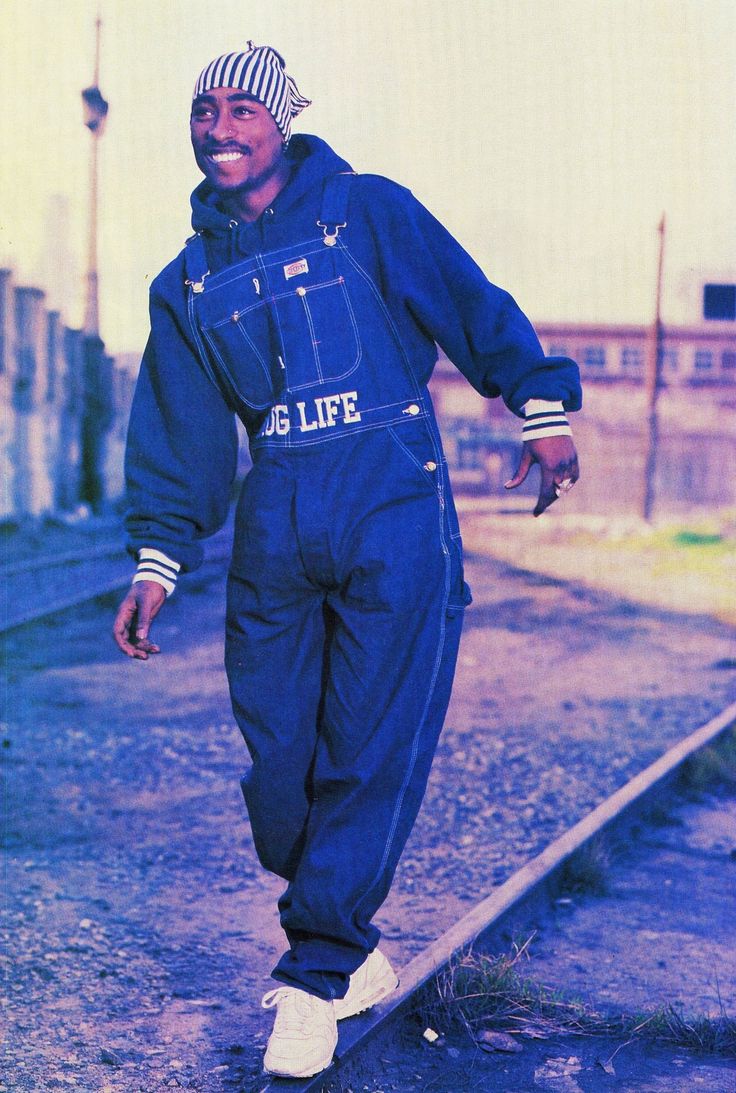
Dungarees exemplify the experimental spirit of 90s fashion, as they were embraced by artists seeking a cool and comfortable aesthetic. Originally designed as protective work garments, similar to Timberland boots, Hip Hop artists transformed dungarees into a bold fashion statement.
This style gained popularity during the 90s thanks to influential figures like Will Smith, 2Pac, The Fugees, and TLC. Their unique interpretations of dungarees showcased how functional clothing could be reimagined within the realm of Hip Hop, blending comfort with style in a way that resonated with fans and left a lasting mark on fashion trends.
cONCLUSION
In conclusion, the fashion of the 90s Hip Hop era has left an indelible mark on contemporary style, reflecting a rich tapestry of cultural identity and artistic expression. From oversized clothing and iconic footwear like Timberland boots to the symbolic use of accessories like bandanas and bomber jackets, these trends not only defined a generation but also continue to influence modern fashion.
As artists utilized their platforms to showcase their unique styles, brands began to cater to the tastes of a burgeoning urban market, resulting in the rise of iconic labels and a new standard in streetwear. The fusion of Hip Hop with sportswear and the incorporation of bold graphics, denim, and leather created a vibrant aesthetic that resonated with youth culture.
Today, the nostalgia for 90s Hip Hop fashion remains strong, with designers and influencers drawing inspiration from this influential era. As we explore the styles and trends that emerged during this time, it becomes clear that the legacy of 90s Hip Hop fashion is not merely a relic of the past but a continuing source of inspiration that shapes our wardrobes and cultural expressions today.

